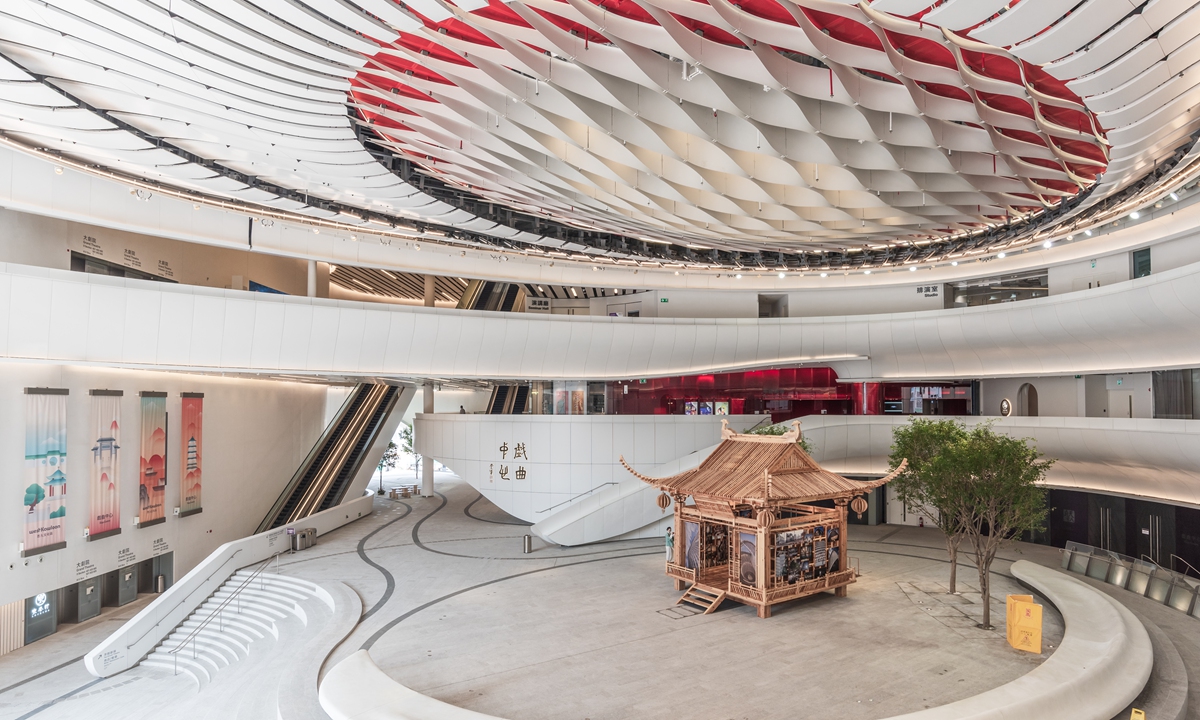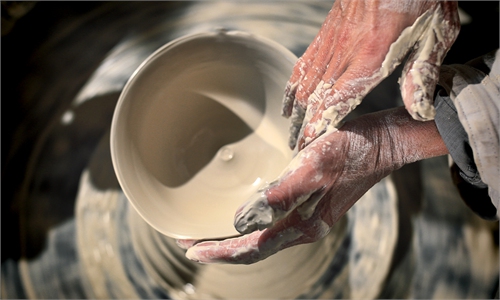
The Xiqu Centre in Hong Kong Photo: VCG
Cantonese OperaCantonese Opera is one of the Chinese local operas. It is popular in South China's Guangdong Province, the Guangxi Zhuang Autonomous Region and the Hong Kong and Macao special administrative regions. With a history of more than 300 years, it has absorbed multiple musical and theater elements, combining Bangziqiang (clapper opera music) with the Cantonese dialect. It has become the most influential form of opera in the Cantonese language zone and the most representative Chinese opera overseas.
At the end of the Ming Dynasty (1368-1644), the Yiyang melody and Kunqiang melody were introduced into Guangdong Province. Later during the Qing Dynasty (1644-1911), the local opera, which was mainly based on the two main melodies, Xipi and Erhuang, merged with Gaoqiang (a derivative of the Yiyang melody), Kunqiang melody and folk music as well as Cantonese narration, gradually establishing Cantonese Opera.
Singing in Cantonese Opera is accompanied by traditional Chinese musical string, wind and percussion instruments such as xiao (vertical bamboo flute). As the art form has developed, other types of musical instruments have been introduced, even Western ones such as saxophone.
The Cantonese Opera covers a wide range of themes from classic Chinese literature such as the novel Dream of Red Mansion and the folk tale The Magic Lotus Lantern. Its performers are divided into 10 lines of work, or hangdang, including mo (middle-aged and old men), sheng (young men), dan (women), jing (men with painted face), chou (clowns) among others. Besides singing and acting, the opera also integrates stunts based on the southern school of Chinese acrobatics.
The performers' makeup is usually simple but very colorful and their costumes are made using exquisite Guangdong-style embroidery. Due to the impact of modern urban culture, Cantonese Opera has become less and less popular, so urgent efforts are needed to preserve it. In 2006, it was listed as a national intangible cultural heritage, and in 2009, it was officially listed as an Intangible Cultural Heritage of the Humanity by UNESCO.
In January 2019, the Xiqu Centre was opened to the public in Hong Kong to promote Cantonese Opera and other Chinese operas. On Friday, some scenes of Cantonese Opera were put on show at the theater to mark the 25th anniversary of Hong Kong's return to the motherland.
Global Times


